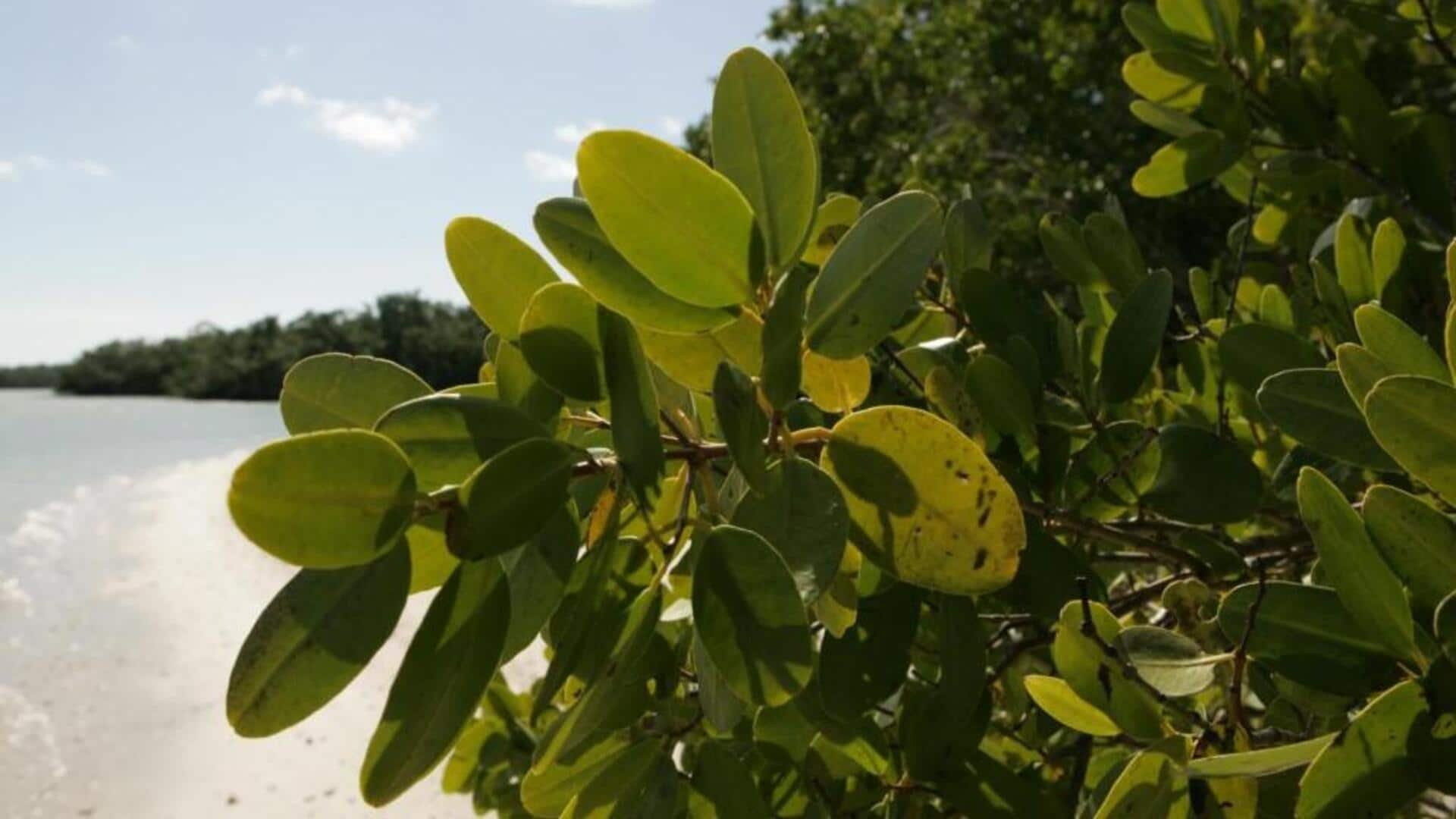
5 alternative uses of mangrove leaves
What's the story
Often overlooked, mangrove leaves are useful in so many ways beyond their natural habitat. Not only are these leaves essential for coastal ecosystems, but they also have practical applications in daily life. From health benefits to household uses, mangrove leaves can be an unexpected yet valuable resource. Here are five alternative ways to incorporate mangrove leaves into daily routines.
Tip 1
Natural dye for fabrics
You can also use mangrove leaves to dye fabric. The tannins in the leaves yield earthy tones which are bright and last long. Boil the leaves in water until you get the desired color for the dye. This natural substitute for synthetic dyes is not just sustainable but also lends your clothes and textiles a unique touch.
Tip 2
Herbal tea infusion
Did you know that mangrove leaves can be brewed into a herbal tea? These teas, known for their antioxidant properties, can offer a number of health benefits. They may boost immunity and help improve digestion. Just steep dried mangrove leaves in hot water for a few minutes, strain, and enjoy this refreshing beverage!
Tip 3
Organic fertilizer component
Rich in nutrients, mangrove leaves make an excellent organic fertilizer component. When they decompose, they release essential nutrients into the soil, promoting healthy growth of plants. By mixing crushed or composted mangrove leaves into the soil of your garden, you can easily enhance its fertility in a natural manner. Not only does this enrich the soil, it also promotes sustainable gardening with a readily available natural resource.
Tip 4
Natural pest repellent
Traditionally, mangrove leaves have also been used as a natural pest repellent. The strong aroma and chemical compounds of mangrove leaves deter insects. By placing dried or fresh mangrove leaves around homes or gardens, you can keep pests at bay, without the use of chemical pesticides.
Tip 5
Crafting material for art projects
The sturdy texture of mangrove leaves makes them ideal for various art projects and crafts. You can use them in creating decorative items such as wreaths or collages, thanks to their unique shape and color variations. Artists often appreciate these materials for adding an organic element to their creations without any environmental impact.